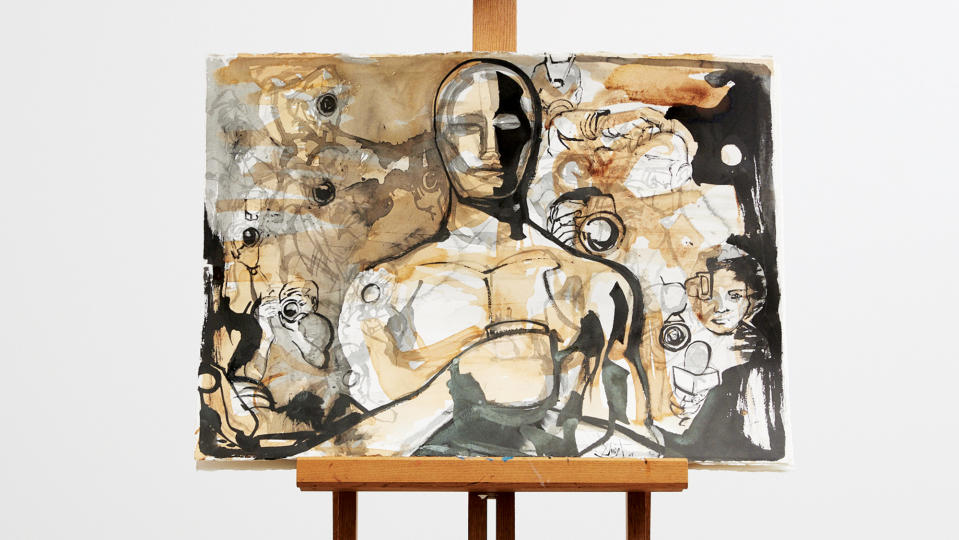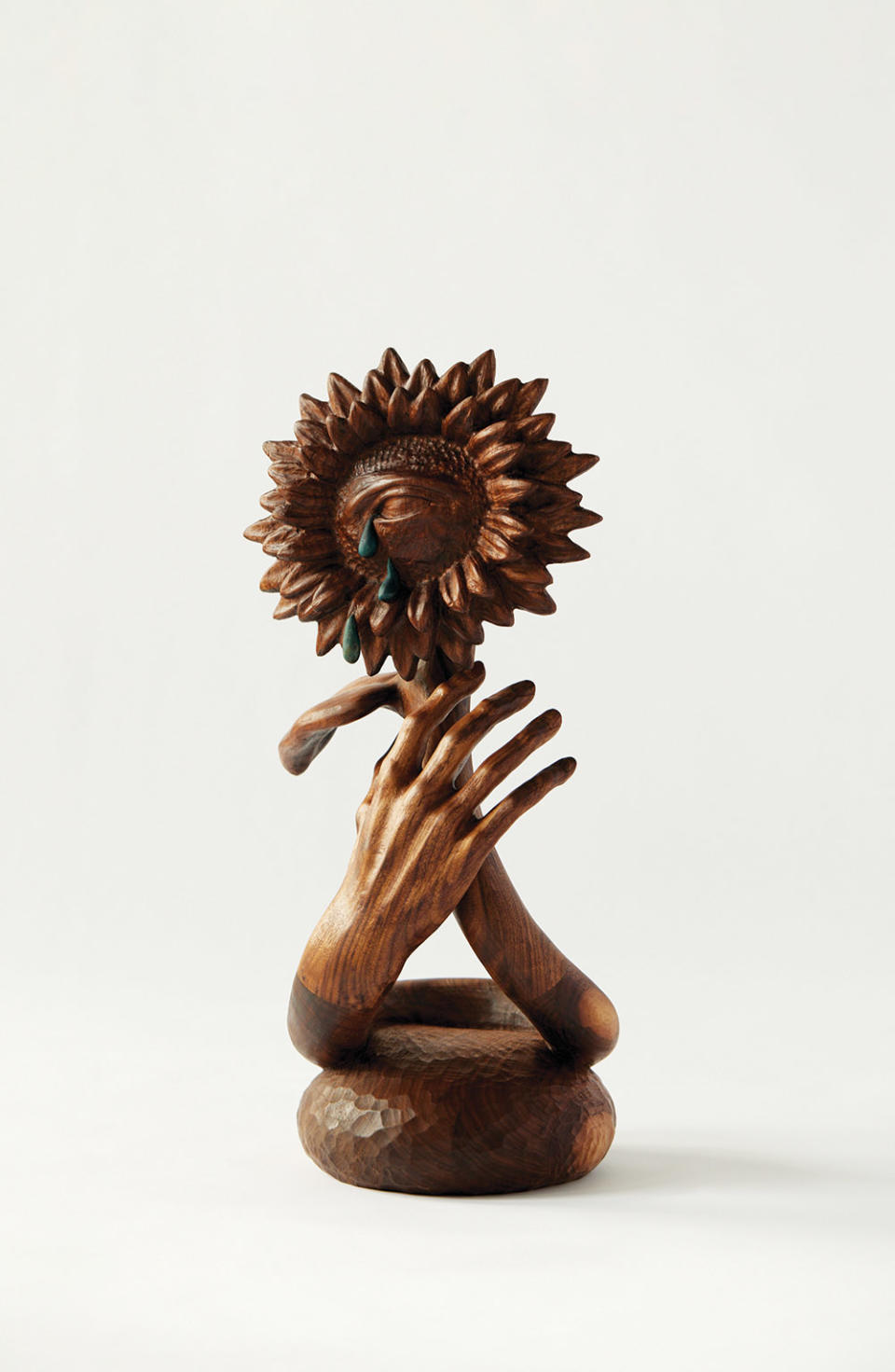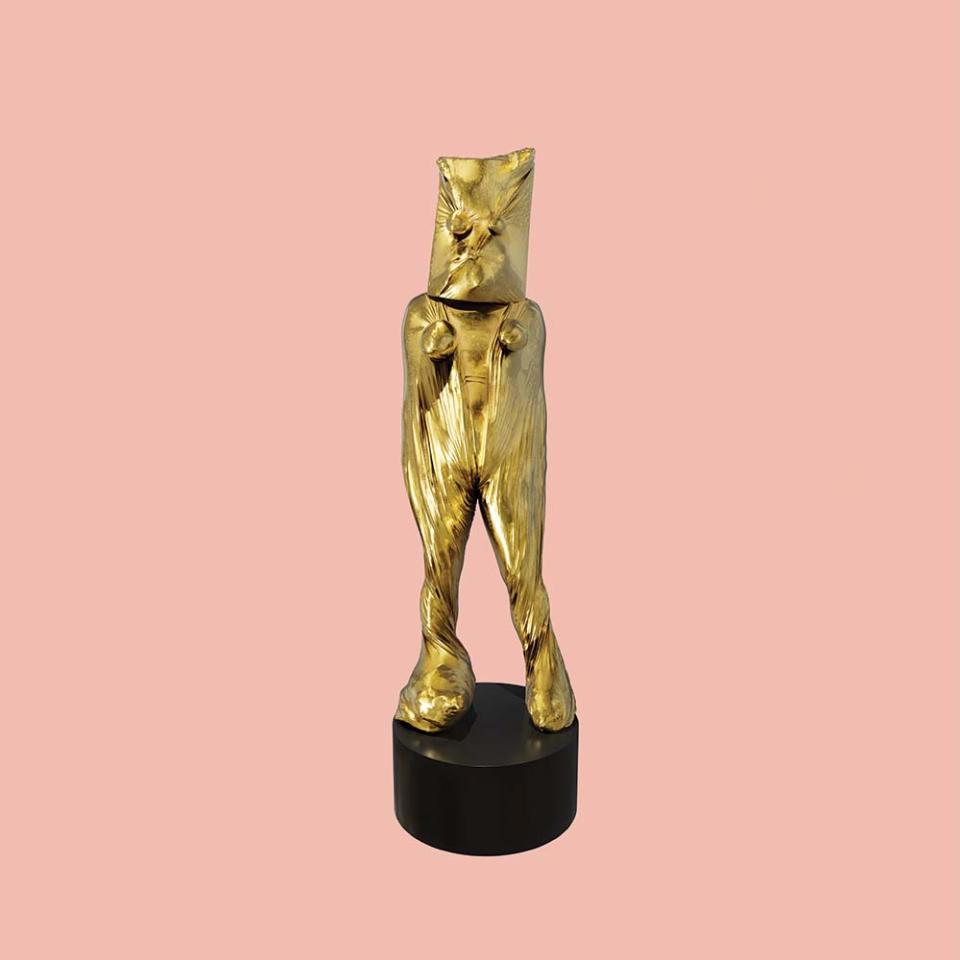Pop Art Icon Kenny Scharf and Other Artists Reinvent the Oscar

To kick off our annual Oscars Issue, The Hollywood Reporter commissioned 11 leading artists — spanning North America, from L.A. to Guadalajara to New York City — to reinterpret the iconic Oscar statuette in paintings, drawings, sculptures, conceptual photography and performance. Their multimedia works, exclusively on display on these pages, will also be the subject of a special Oscar Week exhibition at the Jeffrey Deitch Gallery in Hollywood, opening March 9. We asked each artist to give their own version of an Academy Awards speech, with a behind-the-scenes look at what inspired their glittering creations. As Kenny Scharf, the Los Angeles native whose art has defined New York City since the ’80s, succinctly puts it: “I want to thank everyone who ever helped me. Oh, it’s not for me. Byyeeee …” Shortest acceptance speech ever!
Kenny Scharf (@kennyscharf)

Seth Bogart (@sethbogartofficial)

I wanted to reimagine the Oscar as “Oscar — the Buffest Man in Hollywood.” He has huge muscles and a really good hair flip. I thought it would be cool if the Oscar suddenly looked suspiciously like a weightlifting trophy, which in my mind somehow gives it a queer twist. I also made a female Oscar, and she was wearing a huge B-52’s wig and had a Dolly Parton-esque chest, but she didn’t turn out exactly as I was hoping. Also the gold overglaze I used for the ceramics is so expensive because it has real gold in it! The palm trees were already in my studio, as they are part of a much larger project I am working on, but they fit so well with the Oscars, so I used them.
More from The Hollywood Reporter
2024 Oscars Ties Record for Most Women Nominees, With 32 Percent
Follow That Envelope! What Happens to the Cards That Reveal the Oscar Winners?

Jose Davila (@josedavila)

My photographic cutouts are about the indeterminacy of viewing as consuming, when the proliferation of images is constantly testing our sense of place or time as viewers who are constructing history. By piercing or “cutting out” the central subject in documentary photography, I’m compelling the viewer to imagine, as an act of creativity. They appeal to the common universal memory within architecture, art history, and the existing photographic documentation of artists and their studios. The Oscar is such a focal point in our collective history at this point, it feels subversive to erase this man from this classic image. He’s still there, but not.
Trulee Hall (@truleehall)

In my work, layers of fluctuating binaries, such as the separation between “fake” representations and “reality,” are consistently brought into focus, interplayed and subjected to ritualized unification processes. Bodies and objects interact and are manipulated in an open-ended, highly suggestive fashion, engaging unconscious triggers often by using the erotic or grotesque — with a heavy splash of humor. I love the pageantry of the Oscars ceremony. We gawk jealousy at the over-the-top fanciness that makes it feel so unreal — even less real than the movies. But who is this Oscar Man? I wanted to bring him to life! Seen through my pervy queer lens, he is sexy, sassy and made to be manhandled … by a very strong woman. He also has a romantic sweet side, and an affinity toward beautiful trans women.

Chaz Guest (@chazguest)

With my morning espresso, my ideas come more clearly and I use the excess coffee as a medium (along with sumi ink) to make my paintings. The title of this piece is “We See You, Oscar!” and I wanted to capture the paparazzi capturing the Oscar moment. It’s a quick expression, a reframing of this iconic moment.
Vincent Pocsik (@vincentpocsik)

When I first was thinking of the Oscar, I was thinking of the moment of the winner’s hand raising it up to show it. I wanted to capture that moment of rejoicing. I thought that a sunflower would be perfect for its representation of positivity, strength and dedication. Then, adding the crying (happy or sad) eye shows the complicated emotions that arise once you have hit the pinnacle of a dedication to your craft. The hand is then reaching up to grasp this moment, and is attached to the flower stem. This represents to me a full circle of dedication to a craft (acting, in this case), grasping at the highest moment and then restarting the process again.

Polly Borland (@polly_borland)

I love awards shows. I’m not sure why, because I know they are designed to feed the capitalist machine — it’s really about selling product — but I love the thrill of winning and watching someone experiencing that thrill. If I was asked to design a statue for the Oscars, this would be it. The contortions within the form capture how women are sewn into their dresses, and the excruciating thrills and heightened self-consciousness I would experience in this moment, all wrapped up in glitter and gold.
Alake Shilling (@sillyshilli)

I was going to paint a penguin as a large Oscar, but I felt like the octopus was a better symbol for opulence and abundance and winning. When you watch the Oscars, you want to see your favorite actor win because they deserve it. They’re all reaching for the stars, and you need as many arms as you can get, right? Everyone lives a life, but how many people win an Oscar? It’s so silly to think of this octopus winning all these Oscars for comedies or dramas. It’s just so funny to me.

Isabelle Brourman (@loveizzystudio)

This piece, Get Ready With Me, is a subgenre of digital storytelling popularized by lifestyle vloggers, which delves into the symbiotics of a pretty picture. It points to the process it takes to appear perfect, like deconstructing Cinderella. It is an acknowledgment of the unvarnished wake-up call Barbie has when her heels and body are suddenly subjected to the laws of gravity. In this mixed-media piece, I strategically embedded glance and glare within a Russian nesting doll tapestry of psychedelic narratives, the magical realism which blooms and haunts a woman’s experience in the “real world.” My hero’s journey has a lot to do with the reclamation of pink, wielding it as a means of access to the comforts of sisterhood and as an armor, which allows my artistic practice to drift and maneuver across genres. Pink’s power is in its underestimation: It is the philosophy of the maneuvering magpie, unapologetically gushing and disappearing in plain sight.
Karl Haendel (@karlhaendel)

I wanted to relocate the Oscar from the movie business into the milieu that I play in, which is art. I don’t have any involvement in Hollywood or know much about the awards, so I’ve always considered the Oscar to be an art deco sculpture of a somewhat androgynous little gold man whose name is Oscar. I set him on a shelf with other figurative sculptures, formally ancillary to another fella who is doing some serious thinking.
Karon Davis (@karondavis)

Cedric Gibbons designed the Oscar in 1928. It is said to be a knight holding his sword, a symbol of protection for all in the industry. I wonder if he was influenced by Egypt, because it is very similar to the god Ptah. Ptah was the god of all gods. With his breath, he gave life to all gods and heaven and earth. He was the god of craftsmen, architects and artists. He holds a staff, or djed, for stability and protection. He is the protector of all that is and will be. The Creator. The omnipresent Artist.

This story first appeared in the March 6 issue of The Hollywood Reporter magazine. Click here to subscribe.
Best of The Hollywood Reporter

 Yahoo News
Yahoo News 
